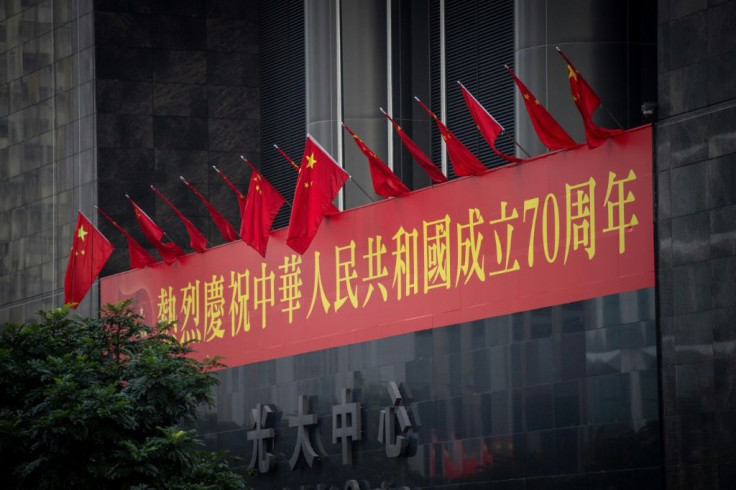China Pushes To Gain Edge In Unmanned Warfare, Shows Off Drone Force

China’s Oct. 1st celebration on Tuesday featured a large military parade in Tiananmen Square where it appears that the People’s Liberation Army (PLA) is making pilotless aircraft and unmanned submersibles its priority for use in unmanned warfare. The parade showcased three formations of drones in their debut appearance in a PLA parade on National Day.
Included in the parade were unmanned aerial vehicles (UAVs) and unmanned underwater vehicles (UUVs) placed on trailers behind truckloads of command and control equipment. Shanghai military commentator Ni Lexiong said, “This suggests the PLA is prioritizing the development of the most cutting-edge technologies that will change the game of war.”
One of the drones, identified as a DR-8, was photographed during a parade rehearsal last week and the images appeared on social media for a short time. The DR-8 figures to play a prominent role in any conflict involving the United States in the South China Sea or Western Pacific.
Zhou Chenming, a Beijing-based military commentator, claims that the DR-8 can infiltrate enemy air defenses and return unharmed carrying any gathered intelligence like high-definition photographs of potential targets. The PLA describes it as a “high-altitude, high-speed reconnaissance UAV.” It can fly at supersonic speed and has stealth capability, according to some analysts.
Other UAVs and UUVs on display were:
- The GJ-11 stealth drone, that has drawn comparisons to the US B-2 Spirit bomber and the X47B, a US Navy carrier-based long-range combat drone.
- The HSU-001 submersible is comparable to the US Navy’s extra-large UUV, the Orca, but is slightly smaller and carries a lighter weapons payload. It can sail long distances autonomously to collect environmental data and spy on enemy vessels.
- The GJ-2 reconnaissance and strike drone, a more conventional addition to China’s UAV fleet was seen with a full payload of missiles and bombs for air defense, air combat and ground attack.
- The CH-7, a high-altitude, high-speed, long-endurance combat drone unveiled last year, continues the practice of drones with a flying wing shape which can significantly reduce an aircraft’s radar visibility.
- The “export version” of the GJ-2 called the Wing Loong II that China has sold to clients in the Middle East, including the United Arab Emirates and Saudi Arabia.
- Other internationally popular drones such as the CH-4 and Wing Loong I.
The commentator Ni added, “Future warfare will involve more technology and fewer humans, and air superiority is the key to victory. Therefore, UAVs will have a very important role to play.”
© Copyright IBTimes 2025. All rights reserved.





















